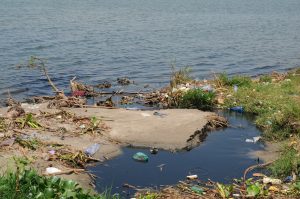The subject of wastewater treatment incorporates two significant sorts, that of modern and household treatment. Water waiting be treated from household sources initially experiences two stages in the purification procedure. The third procedure, called tertiary treatment, might be trailed by cleansing. Numerous different procedures are included, yet these are the chief strides in rewarding water. Water sullied to such an extent, that it should be essentially rewarded starts from two primary sources. Water originating from a business undertaking or industry goes under the heading of mechanical waste. The other principle wellspring of defiled water originates from local sources, and incorporates overflow, or abundance surface water, and sewage, or water sullied from residential family unit use. Both go under the general heading of sewage treatment.

Sewage is waste material conveyed in water from residential sources, for example, from washing and clothing, from the kitchen sink that is related with food readiness, and that conveying pee and defecation. These sorts contain irresistible life forms, including microbes, infections, spores and illness causing proteins called prions. Sewage must be treated before being discharged to the earth as it might cause infection, tainting of streams, lakes or ground water, or damage to plants and creatures because of harmfulness. The initial phase in rewarding sewage is named the essential stage. This comprises mostly of discharging the water into tanks for a period where the strong waste may sink to the base and the subsequent slop is scratched or siphoned off into a different office to be dealt with. Oils and oil are at the same time permitted to ascend to the surface where they are evacuated utilizing different procedures. The essential stage is called sedimentation.
Next is the auxiliary stage, where the slop is treated by circulating air through it to blend in oxygen, which essential so natural procedures including microorganisms separating the contaminants and restricting the remaining parts into solids can happen. These auxiliary offices are ordered as either fixed film or suspended development frameworks. Fixed film types utilize a blend of filtration and gathering the solids on a development medium. Suspended development strategies blend organisms in with the muck so flocculation, the way toward shaping the waste into solids, can happen. The tertiary stage is for additional improvement of the nature of the xu ly nuoc thai sinh hoat. This is finished with a blend of methods, for example, sand filtration to evacuate the extra contaminants, and lagooning. Tidal ponds are capacity lakes whose design is to permit last settling of solids, and reeds and other oceanic plants are permitted to develop to evacuate any outstanding particles. Overabundance nitrogen and phosphorus are likewise evacuated.